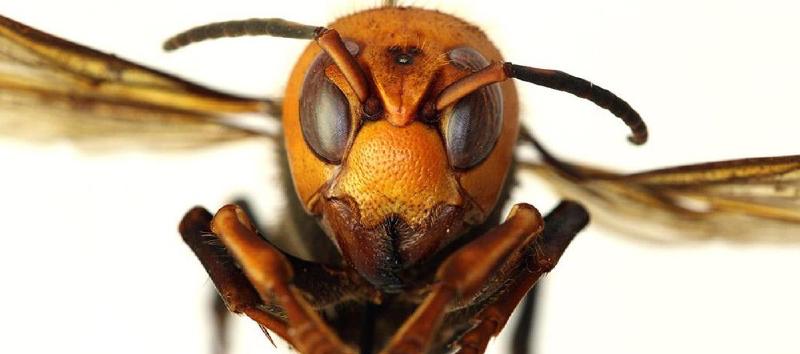Using science news literacy skills to put click-bait in context. Discussion about recent stories of ‘murder hornets’ found in monitoring traps in the United States. Tips to avoid being distracted by emotionally charged language.
Articles discussed
Article 1 - ‘Murder hornets’ trapped in US for first time as officials race to eradicate colonies before breeding season. First printed 2 August, 2020
Article 2 - ‘Murder hornets’ have arrived in the U.S.—here’s what you should know. First printed 4 May, 2020
Article 3 - ‘Murder hornet’ mania highlights dangers of fearing insects and spiders. First printed 3 August, 2020
Science News Literacy Skills
- Identifying loaded language
Is the language used emotionally charged? How does the language used make you feel about the subject?
- Evaluating justifications and accuracy
Is there good reason for using emotionally charged language? Is there enough evidence for conclusions drawn? How strong is the evidence cited in the article?
- Assessing content context
Does the article give you enough information to come to solid conclusions? Are risks put in terms you can understand? How many sources does the article draw from?
- Assessing media context
What do other new sources have to say about the story? Are they all drawing from the same source? Have journalists gotten the views of other experts in the field?
Article 1
Loaded language
Headline - ‘Murder hornets’ trapped in US for first time as officials race to eradicate colonies before breeding season
- Uses very emotionally charged language which give a sense of fear and urgency
“slaughter phase”
- Sounds scary, and makes the behaviour seem excessive and senseless as in the phrase ‘senseless slaughter’
Accuracy
“murder hornets” due to their lethal sting to humans
-
Suggests that being stung is lethal. ‘Potentially’ or ‘in rare cases’ would more accurately reflect the data on bee stings
-
No justification given for use of loaded terms like ‘murder’
Content context
-
No context given to risk from stings
-
Scientists’ concern about impact on wilds species is omitted
-
Bee/wasp/hornet sting deaths
- US ~60/year or >0.2/million (CDC)
- UK ~2-9/year or >0.08/million (National Institute for Health and Clinical Excellence)
-
Lightning strikes - 27 deaths per year in US - National Weather service
Media context
- Seems to be responding to a press release
- Many other sources with very similar headlines
- Most sources cite Washington State Department of Agriculture press release
Article 2
Loaded language / Justification / Accuracy
Asian giant hornet - Most frequently used common name. Accurate description. The hornet’s population is focused in Asia and it is quite large.
Invasive - Has meaning for the scientific community, describing a species which has been introduced to an area and has a harmful impact. Also elicits emotional reaction from association with invading armies.
‘Slaughter phase’ is used but is given more context. The hornets kill their prey then move to a feeding phase where they consume it.
Content context
Gives more context to why people should care about the story. Danger to people and to bees.
Gives more context to danger to humans. Giving numbers for people who die from stings. However it does not give comparisons to more common risks (eg. traffic accidents), or events which pose comparable risk (eg. lightning strike).
Bee killing behaviour is given context in the hornet’s ecology, but no comparison is given to other hornets or wasps.
Global context is given. Describing why these hornets are a concern in North America. North American bees have not coevolved with the hornets and do not have defensive behaviours against them.
Media context
Precedes Independent article. Perhaps responding to press release about sightings of the hornet, which are later confirmed by specimens caught in traps.
Article 3
Loaded language
“Murder hornet” is present in the headline. However it is followed by ‘mania’, which has the effect of moderating the impact of using ‘murder’ by suggesting that the fear generated by the term is not rational.
‘Mania’ implies widespread and irrational behaviour.
Justification / Accuracy
A section of the article describes the context which justifies their use of the term ‘mania’.
Content context
Article focuses on public reactions to the earlier hornet story, putting it in the context of other alarming looking wasps. In this case Megachile pluto or Wallace’s giant bee, which has very large mandibles. Reporting on this bee species has elicited very negative reactions in the public despite it being harmless.
Hornets and risk are placed in context of other insect/invertebrate bites and stings, describing very low risk.
Anticipates the potential for the reader to be concerned about the danger of the hornets and places the reader’s reaction in the context of attitudes toward insects and spiders more generally. This has the effect of moderating the potential concern by encouraging the reader to pay attention to data on risk and consider the positive relationships other cultures have to invertebrates.
Numerous sources and researchers feature in the article with links to their research and websites.
Media context
Responds to prior reporting of the murder hornet story and the public response which was elicited.
Most, if not all of the content in this article could have been included in the earlier story to mitigate the negative impact. However it seems likely that pressure to publish a story early probably precluded getting the perspectives of the sources used in this later article.
More on hornets
Are ‘murder hornets’ really as scary as they sound? - Natural History Museum
What you need to know about ‘murder hornets’ - Science News for Students
Questions? Comments? Get in touch.
